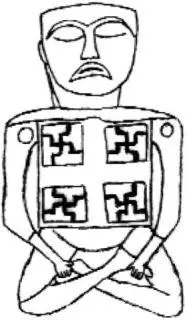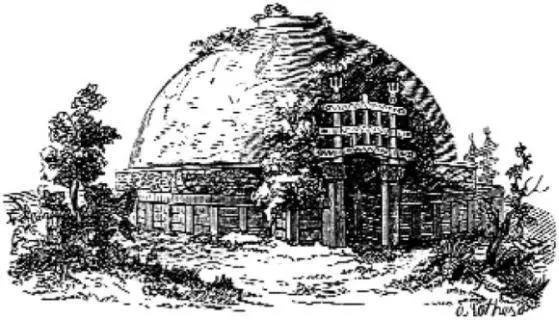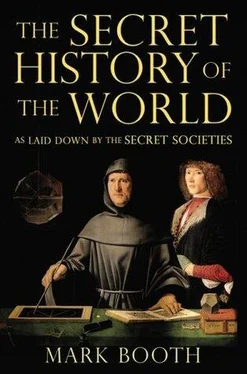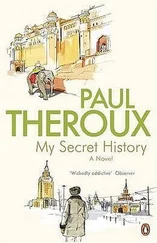Now the followers of Buddha consciously participated in their own initiation, consciously working on their own chakras. Part of this work was living a new, more moral way of life, based on compassion for all living things.
Because people were growing increasingly independent of the spirit worlds, there was a danger that an individual’s powers would outstrip his desire to do the right thing and use them wisely. There was also a danger that the evil-minded might gain the supernatural powers that initiation confers.
It has also always been possible for people to gain these powers even though they have not been initiated. Sometimes it happens as a result of extreme childhood trauma. This can cause a rent in the psyche through which spirits rush in an uncontrolled way. Some modern mediums have suffered great childhood traumas. Sometimes people acquire powers through the practice of a magic which is either black or at least not attuned to the highest spiritual aims, as it is in the venerable secret schools which keep alive a genuine, ancient tradition. The danger in all this is that a non-initiate, even a well-intentioned one, may have difficulty recognizing the spirits he or she is communicating with.

In esoteric Buddhism, the Buddha is the spirit of Mercury. It is no coincidence, then, that the Celts called the planet Mercury ‘Budh’, meaning ‘wise teaching’. That the lotus position characteristic of the Buddha was known to the Celts is proved by this carving on a bucket, found in Oesberg, Norway.
The aim of the Eightfold Path is initiation as part of a controlled and protecting moral development. If you are able to control the world, you must first be able to exercise control over yourself.
The throat chakra is the organ of the formulation of spiritual wisdom. It connects the heart chakra with the brow chakra. In the physiology of an initiate currents of love stream up from the heart chakra through the throat chakra to light up the brow chakra. When this light streams up on to the brow chakra, it opens up like a flower in the sun.
We may all catch an echo — or foretaste — of this in our own lives. If we look at someone with the eyes of love, we see good qualities not perceptible to others. Just the act of looking at someone lovingly may also bring out these qualities and help them to blossom. If you meet someone with an extremely refined spiritual nature, he or she will probably be happy, smiling, laughing, almost childlike. This is because they look at the whole of humanity with the eye of love.
When the Buddha died he had achieved his aim. He would not be required to reincarnate.
But this is not to say he is no longer a part of this history, as we see when we come to look at the Italian Renaissance.

The Buddhist Emperor Asoka, grandson of the first man to unify India, ruled from 273 BC. When he lost more than a hundred thousand men in a battle, he renounced war, and from then on tried to rule by the shining example of his Buddhist spirituality. He had some 84,000 stupas, or shrines, erected in India, of which a handful survive. In conventional history he is remembered for his irrigation, roads, hospitals and botanical gardens, his vegetarianism and ban on the killing of animals. In esoteric history he is remembered, too, for having founded the Nine Unknown, a powerful secret society that many in the twentieth century, including D.N. Bose, one of India’s leading scientists, believed still operated.
PYTHAGORAS WAS BORN ON THE PROSPEROUS Greek island of Samos in about 575 BC, as the first blocks of marble were being placed one on top of the other on the Acropolis in Athens.
No individual has had a greater influence on the evolution of Western esoteric thought. Pythagoras was regarded as a demi-god during his lifetime. Like Jesus Christ, nothing he wrote has come down to us, only a few collected sayings and commentaries and stories written by disciples.
It was said that he had the power of being in two places at the same time, that a white eagle had permitted him to stroke it, that he once addressed a river god and a voice called out to him from the water, ‘I greet thee Pythagoras!’ It is also said that he once told some fishermen who had been having an unproductive day to cast their nets into the sea one last time, whereupon their catch almost burst their nets. He was a great healer, sometimes reciting particular verses from Homer he believed had great power, just as Christian mystics will recite verses from the Psalms and John’s Gospel. He used music for healing purposes, too. The early Greek philosopher Empedocles said Pythagoras could heal the sick and rejuvenate the old. Like the Buddha he could remember his past incarnations and it was even said that he could recall the entire history of the world from the beginning.
His wisdom was the result of years of research and multiple initiations into Mystery schools. He spent twenty-two years learning the secrets of the Egyptian initiate priests. He also studied with the Magi in Babylon and the descendants of the Rishis in India, where a memory was preserved of the great wonder-worker they called Yaivancharya.
Pythagoras was seeking to synthesize esoteric thought from all around the world into a comprehensive cosmo-conception — what Leibniz, the seventeenth-century mathematician and Cabalist, would later call the Perennial Philosophy.
At this point in the history of the world according to idealism, we have reached a turning point. The great ideas or thoughts emanating from the cosmic mind are now almost hidden by the matter they have worked together to create. The mission of Pythagoras was to record them as concepts before they disappeared entirely.
Pythagoras’s philosophy, therefore, begins the process of translating the primordial vision, the picture consciousness of ancient humanity, into abstract, conceptual terms.
In about 532 Pythagoras fell foul of Polycrates, the despotic ruler of Samos. Forced into exile, he set up a small community — the first of several — in Crotona in southern Italy. Candidates for initiation into his community had to undergo years of training, including a strange diet that included poppy, sesame and cucumber seeds, wild honey, daffodil flowers and the skin of sea onion from which the juice had been completely extracted. There was great emphasis on gymnastics as a way of bringing the three human bodies — material, vegetable and animal — into harmony, and candidates were required to remain silent for years on end.
Pythagoras was able to grant his pupils a great vision of the spirit worlds, which he would then interpret for them. Out of this, the first discursive teaching, would emerge mathematics, geometry, astronomy and music.
In his day Pythagoras was said to be the only human being able to hear the Music of the Spheres, conceived as a scale of different notes each made by the seven planets as they moved through space. This is easy to dismiss as mystical hogwash, but the story of how he measured the first musical scale has an authentic sounding ring to it.
One day Pythagoras was walking through town when he heard metal being pounded on an anvil. He noticed that different sized hammers made different sounds. Returning home, he fixed a plank of wood across a room and hung a series of weights according to the weights of the different hammers in an ascending scale. By a process of trial and error he determined that the musical notes that sound beautiful to the human ear correspond to different weights. He then calculated that they were proportionate to one another in a mathematically precise way. It is from these calculations by Pythagoras that we derive the musical octave we understand and enjoy today.
Читать дальше














